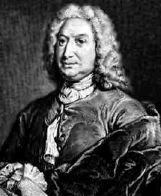

His parents tried to set Johann Bernoulli on the road to a business career but, he disliked it immensely. It was with great reluctance that Johann's father agreed in 1683 to Johann
entering the University of Basel to study medicine. There he took courses in medicine but he studied mathematics with his brother Jacob, who lectured on experimental physics there. It soon became clear that Johann's time was mostly devoted to studying Leibniz's papers on the
calculus with his brother Jacob. After two years of studying together Johann became the equal of his brother in mathematical skill.
Johann Bernoulli made his way to Paris and there he met de l'Hôpital. They engaged in many deep mathematical conversations, and he taught de l'Hôpital calculus. After Johann left Paris, de l'Hôpital published the first calculus book, which includes what we now call l'Hôpital's Rule. As one would expect, it upset Johann Bernoulli greatly that this work did not acknowledge the fact that it was based on his lectures. Johann Bernoulli also began a long correspondence with Leibniz which was to prove very fruitful. He eventually finished his doctoral dissertation on muscular movement, which was really an application of mathematics to medicine.
In 1694 he considered the function y = xx and he also investigated series using the
method of integration by parts. He had great success in integrating differential equations. He summed series, and discovered addition theorems for trigonometric and hyperbolic functions using the differential equations they satisfy. As a result he was
offered the chair of mathematics at Groningen.
Johann Bernoulli married and had several children, three of which also became mathematicians:
Nicolaus, Daniel, and Johann.
Johann competed with his brother in what was becoming an interesting mathematical tussle but an unfortunately bitter personal battle. He solved the problem of the catenary which had been posed by his brother in 1691. He proposed and solved the problem of the brachristochrone in June 1696 and challenged others to solve it, his brother and Leibniz succeeding. Not to be outdone, Jacob proposed the isoperimetric problem. Johann's original solution was less than satisfactory, but he returned to the problem later and
produced an elegant solution which was to form a foundation for the calculus of variations.
After his brother died, he returned to Basel to fill Jacob's chair of mathematics, where he made important contributions to mechanics with his work on kinetic energy.
In 1713 Johann became involved in the Newton-Leibniz controversy. He strongly supported Leibniz and added weight to the argument by showing the power
of his calculus in solving certain problems which Newton had failed to solve with his methods. His
support delayed acceptance of Newton's physics in Europe.
Johann Bernoulli attained great fame in his lifetime. He was elected a fellow of the academies of Paris, Berlin, London, St. Petersburg and Bologna. He was
known as the "Archimedes of his age" and this is indeed inscribed on his tombstone.